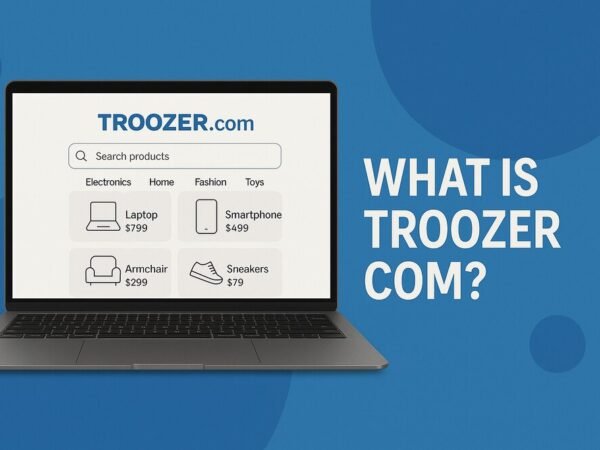If you’ve ever dreamed of getting early access to upcoming League of Legends content, trying out unreleased champions, or simply exploring new game modes before everyone else, then installing the PBE Emulator might be just what you’re looking for. Whether you’re a seasoned player or new to the League of Legends universe, the PBE (Public Beta Environment) offers a fun and exclusive way to dive deeper into the game.
In this 2025 guide, we’ll walk you through how to install the PBE Emulator for League of Legends safely and efficiently. From eligibility requirements to step-by-step installation, we’ll cover everything you need to get started. We’ll also provide troubleshooting tips and answer frequently asked questions, all in a friendly, easy-to-follow format.
So, whether you’re excited to test out new skins or just want a head start on the next patch, keep reading to learn how to install PBE Emulator the right way.
What Is the PBE Emulator?
The PBE Emulator is a community-developed version of the official Public Beta Environment offered by Riot Games. While Riot provides a legitimate PBE server for testing new features, the emulator allows more customization and broader access—especially in regions where the official PBE isn’t available.
It replicates much of the same content as Riot’s PBE, including early access to patches, champion reworks, and skins. However, it’s essential to ensure you’re using a trusted source, as unofficial emulators can sometimes pose security risks.
Why Use the PBE Emulator?
Using the PBE Emulator can offer several advantages, especially if you’re looking for flexibility and access without official approval from Riot. Here are some key benefits:
- Early Access: Try upcoming content before it goes live on the main server.
- No Waitlists: Avoid the long queue times and eligibility restrictions of Riot’s PBE.
- Customization: Many PBE emulators offer modding capabilities not available in the official version.
- Offline Practice: Some versions allow limited offline access for training and experimentation.
Pro Tip: Always verify that the emulator you’re downloading is from a reliable community or developer. Check reviews, community forums, and version history.
Requirements Before Installing
Before you dive into the installation process, make sure you meet these basic requirements to install the PBE Emulator without any hiccups:
- A PC running Windows 10 or later
- At least 10GB of free storage
- A stable internet connection (for online content)
- Basic familiarity with file management and setup processes
- An antivirus program to scan downloaded files
How to Install PBE Emulator for League of Legends (Step-by-Step)
Step 1: Find a Trusted PBE Emulator
Start by searching for a reputable PBE Emulator. A few popular community emulators are frequently updated and reviewed positively on Reddit, GitHub, or specialized LoL forums.
Look for:
- Open-source options with regular updates
- Clear installation instructions
- Positive user feedback
Avoid shady websites or downloads with no documentation.
Step 2: Download the Installer
Once you’ve identified a safe source, download the emulator installer. This usually comes in a .zip or .exe format.
- Go to the official page of the emulator project.
- Click the latest stable version download.
- Save the file to a familiar location on your PC (like the Downloads folder).
Step 3: Extract and Launch
If you downloaded a compressed folder:
- Right-click the
.zipfile and select “Extract All.” - Choose a destination folder (e.g.,
C:\PBE_Emulator). - Navigate to the extracted folder and double-click the setup or launcher file.
Step 4: Configure Settings
The first time you launch the PBE Emulator, you’ll usually be prompted to:
- Set game language
- Choose a default server (NA, EUW, etc.)
- Link your existing League of Legends directory (if applicable)
Some emulators even allow you to create a sandbox environment for testing changes without affecting your main client.
Step 5: Run and Play
Once configuration is complete, launch the emulator and log in. If it’s your first time, you may be prompted to create a new account (specific to the emulator). After logging in, you’ll have access to all the PBE content and can start exploring!
Tips for Smooth Performance
To get the most out of your PBE Emulator, follow these best practices:
✅ Keep Your Graphics Drivers Updated
Outdated drivers can lead to crashes or poor performance. Make sure you’re using the latest version from your GPU manufacturer (NVIDIA, AMD, or Intel).
✅ Use a VPN if You’re Region-Locked
Some emulators may be geo-restricted. A reliable VPN can help you bypass regional limitations.
✅ Monitor for Updates
Check the emulator’s update log regularly. Staying up-to-date ensures compatibility with the latest League of Legends changes.
✅ Disable Background Programs
Close unnecessary apps while running the PBE Emulator to reduce lag and free up system resources.
Potential Risks and How to Avoid Them
While many users enjoy the benefits of a PBE Emulator, there are some risks to consider:
- Security Risks: Only download from verified sources. Use an antivirus to scan all files.
- Account Ban Risks: Never use your main Riot account credentials. Create a separate login for the emulator.
- Stability Issues: Some emulators are still in development and may experience bugs or crashes.
If you take proper precautions, installing a PBE Emulator can be a rewarding way to enhance your League of Legends experience.
Conclusion
Now that you know how to install the PBE Emulator for League of Legends, you’re all set to explore new champions, experiment with unreleased features, and enjoy a more flexible gaming environment.
Whether you’re testing builds, previewing skins, or just exploring future patches, the PBE Emulator offers a fun and advanced way to engage with the game. Just remember to prioritize security and stick with reputable sources.
Have you installed a PBE Emulator before? Planning to give it a try this year? Let us know your experience in the comments below—and feel free to share this guide with friends looking to get started!
Frequently Asked Questions (FAQs)
1. Is using a PBE Emulator for League of Legends safe?
Yes—if you download it from a trusted source and scan the files for malware. Avoid using your main Riot credentials, and always keep your antivirus active.
2. Can I get banned for using a PBE Emulator?
Using an emulator itself won’t get you banned from the official game, but attempting to connect it to Riot’s servers or using it to cheat might result in penalties. Always keep emulator usage separate from your main client.
3. Do I need a Riot account to use the PBE Emulator?
Most emulators allow you to create a separate login, so a Riot account is not required. However, some emulators may ask you to point to your main LoL directory.
4. What’s the difference between Riot’s PBE and a PBE Emulator?
Riot’s PBE is official and requires application and approval. A PBE Emulator, on the other hand, is unofficial and often offers more flexibility, fewer restrictions, and added modding capabilities.
5. Where can I find updates or new versions of the PBE Emulator?
Check community forums like Reddit’s r/leagueoflegends or GitHub repositories for the emulator project. Many developers release patch notes and updates on a regular basis.















